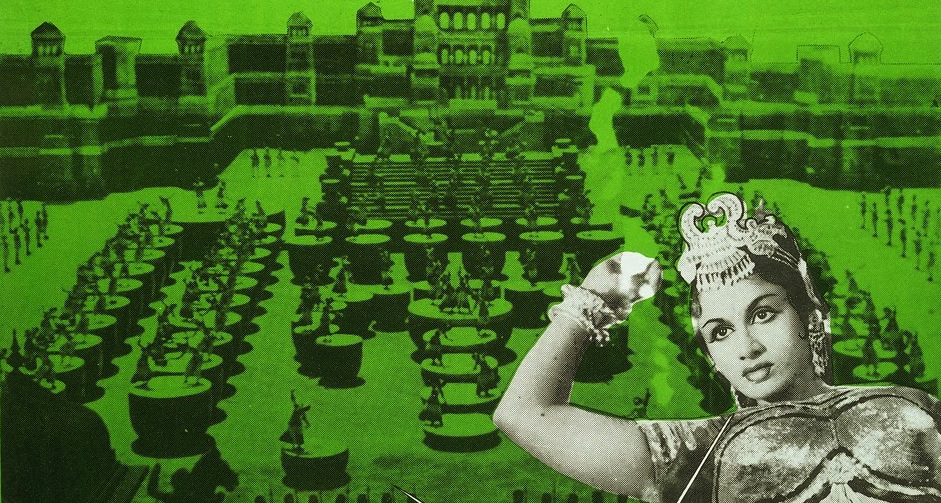With his Hindi-Tamil bilingual Chandralekha/Chandraleka (1948), SS Vasan successfully expanded his market from South India to a pan Indian one. Both versions of the lavishly mounted film proved to be extremely popular, in particular, its spectacular drum dance leading to the climactic fight where the villain, Ranjan, gets his comeuppance. Said to be the most expensive Indian film at the time, Vasan’s confidence in his magnum opus paid off handsomely as the film made huge profits at the box office. While the Tamil film released on 9th April, 1948, the Hindi version premiered on 24th December, 1948.
The March 1950 issue of Filmindia analyzes the detailed economics of the film. And it makes for interesting reading. Quoting the magazine…
“We give below some statistics of Chandralekha the box-office storm produced by Mr SS Vasan of Gemini Studios, Madras, in Tamil and Hindustani:
Statistics of Chandralekha in two versions: Tamil and Hindustani ending 31st December, 1949.
| Production cost with copies | Rs 30,83,200 |
| Additional cost of newspaper publicity in English, Tamil, Telugu, Hindi, Assamese, Gujarati, Marathi, Oriya, Bengali, Urdu, Sindhi and Gurumukhi papers and periodicals all over India up to 31-12-1949 | Rs 5,74,500 |
| Additional cost of outdoor advertisement by way of banners, posters and hoardings all over India | Rs 6,42,300 |
| Number of people employed in the production of the picture:
Main Artistes 22; Small part artistes 28; Dance Artistes 768; Extra Artistes 1737; Technicians 193; Labour 446; Music Staff 63; Creative Group 38; Administrative and Executive Staff 64; Unusual staff including doctors and nurses 22 |
3381 |
| Salaries paid | Rs 6,87,500 |
| Cost of Settings and Materials | Rs 3,27,600 |
| Cost of Wardrobe and Jewellery | Rs 1,22,300 |
| Other Set property | Rs 62,400 |
| The Circus troupe, Governer’s Bodyguards, Malabar Reserve Police etc cost | Rs 1,74,300 |
| Number of Theatres where Tamil and Hindi versions shown up to 31-12-1949 | 1090 |
| Number of employees benefitted at these theatres | 28,340 |
| Number of people who saw the picture:
Urban Audience Rural Audience (ie 60% of total) Total |
1,19,08,144 1,84,56,626 3,03,64,770 |
| Total gross collections till 31-12-1949 | Rs 1,55,05,817 |
| Total Entertainment Tax paid so far at theatres | Rs 32,90,501 |
| Nett theatre collections till 31-12-1949 | Rs 1,22,15,316 |
| Producer’s share till 31-12-1949 | Rs 73,94,519 |
And the picture has still a chance of 40% further exploitation in second and subsequent runs all over the country.”
After getting into more details regarding its making and admitting that this great picture had entertained millions all over the country, the magazine ends with stating, “And this picture which involved an investment of 43 lakhs of rupees was not a box-office fluke. It was planned to be a success by Mr SS Vasan. Without a careful previous planning, no producer will risk such a big amount on production. And Vasan, of all people, is no fool by the widest stretch of imagination.”



I’d like a scanned copy of the article for further facts.
Please upload copy of FilmIndia